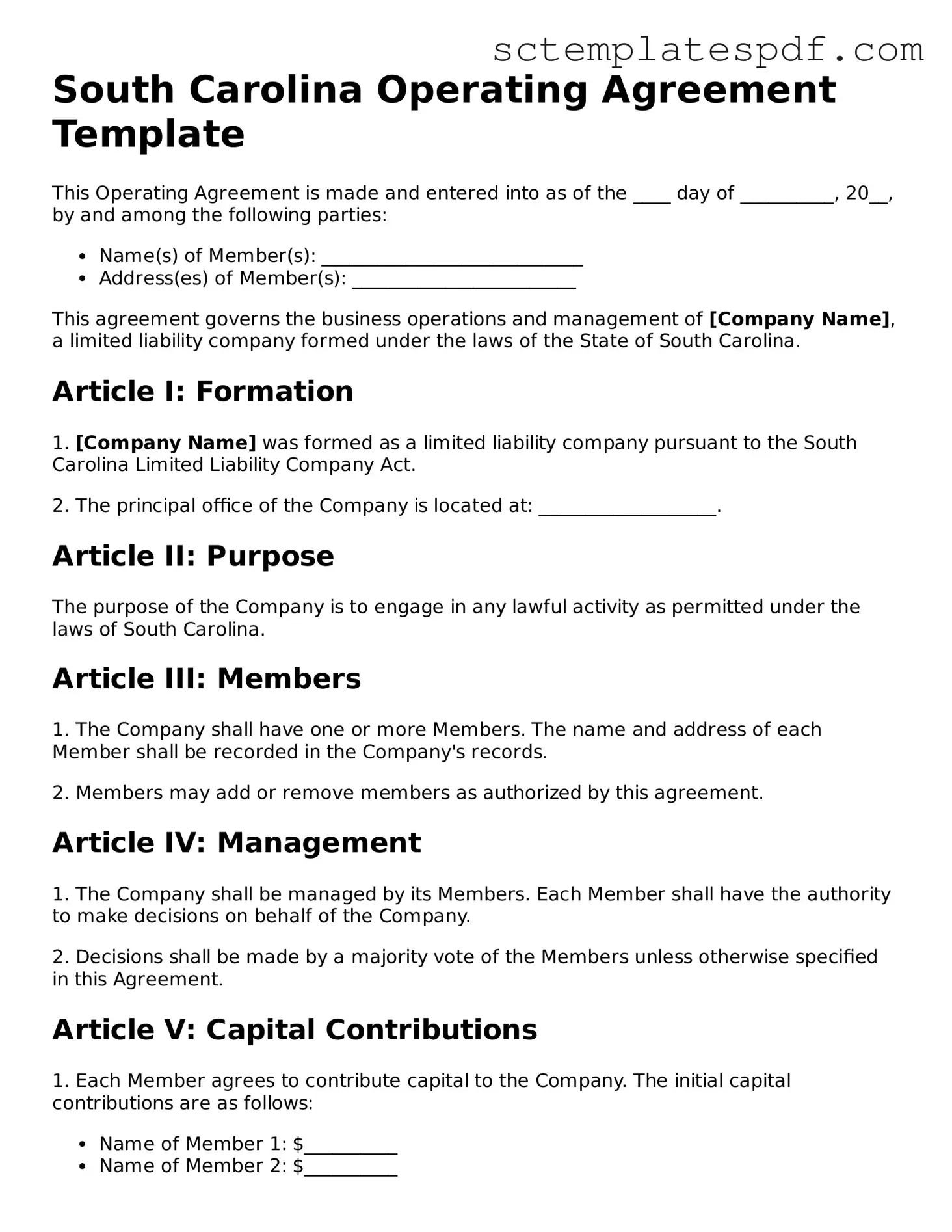Valid South Carolina Operating Agreement Document
The South Carolina Operating Agreement form is a legal document that outlines the management structure and operating procedures of a limited liability company (LLC) in South Carolina. This agreement is essential for defining the roles of members, profit distribution, and decision-making processes. To ensure your LLC operates smoothly, consider filling out the form by clicking the button below.
Fill Out Your Operating Agreement
